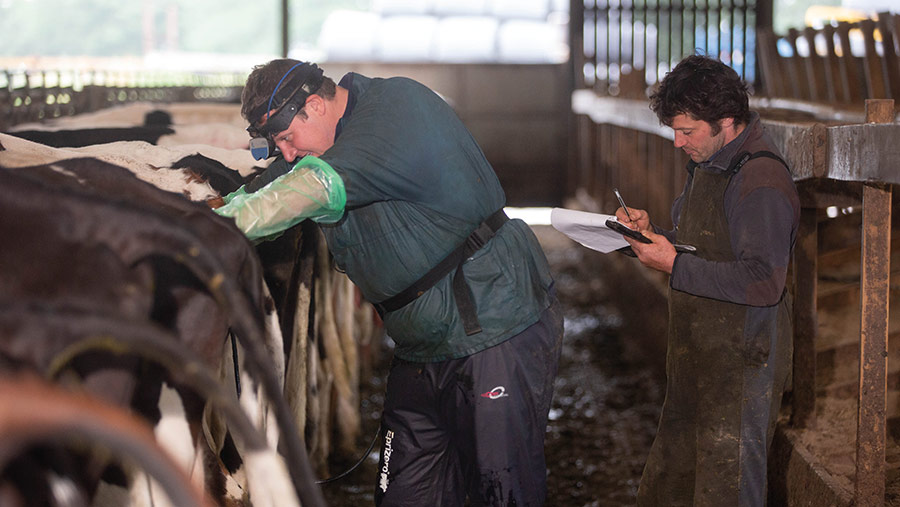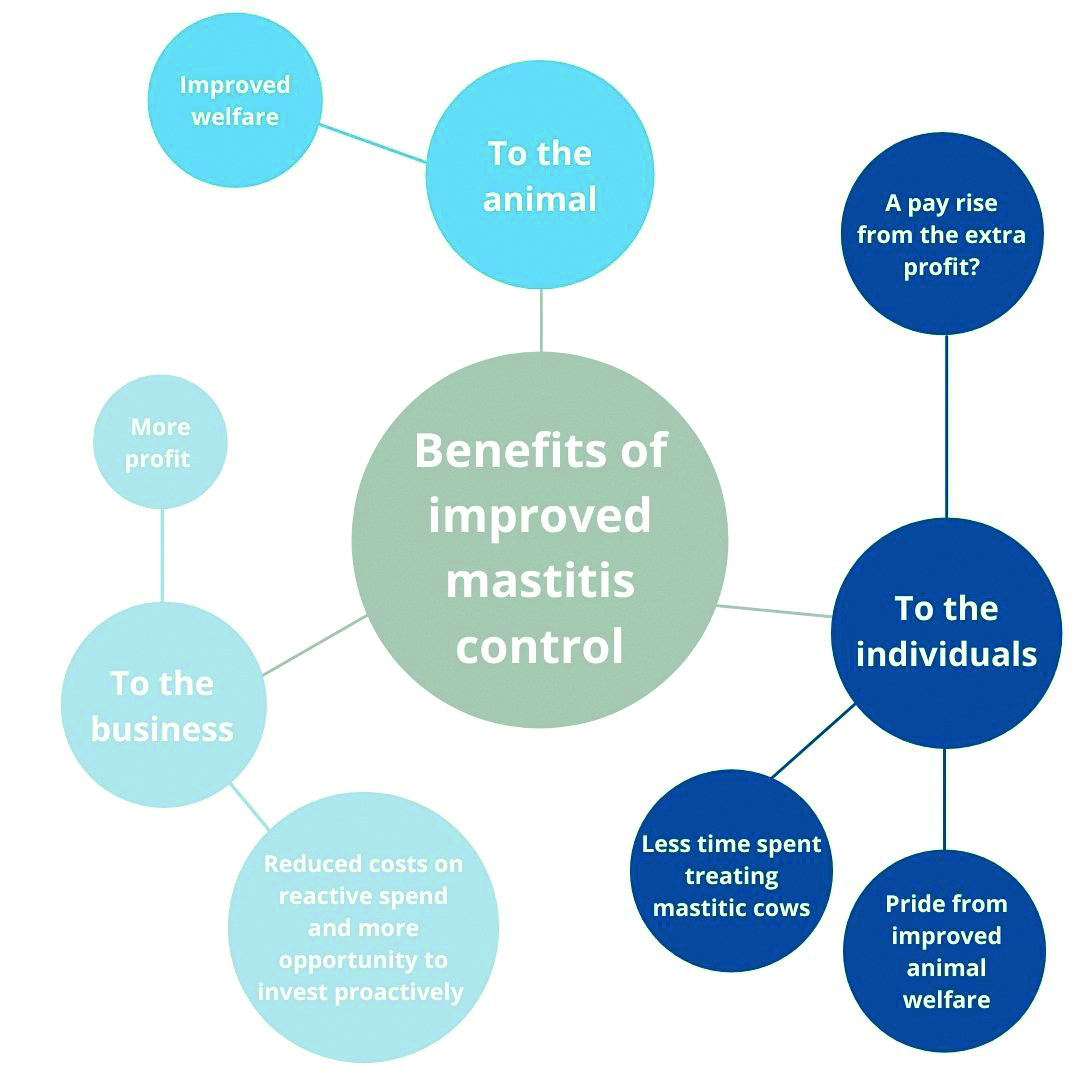Tips for engaging staff in herd health meetings
 © Tim Scrivener
© Tim Scrivener The two areas farm owners and managers struggle to find time for are routine tasks and business analysis, according to feedback from one farmer discussion group.
Sally Dixon, from Sandstone Vet Group, advises how to make time for team meetings to discuss herd health.
In reality, many of the meetings that happen on-farm tend to happen on the hoof. It is unlikely your vet stands in studious silence all of the way through the routine fertility visit.
In normal times, you might have a brew and look at the results of the pregnancy diagnosis session, analysing them as part of the bigger picture.
Perhaps you walk around the cows to assess body condition score, cow comfort, or take a quick look at the feed. It is quite possible that the same person doesn’t carry out the routine every week.
So, how do you make sure that discussions that take place between members of your team and the vet (or any other adviser for that matter) are relayed and communicated to the rest of the team who need to know?
See also: 7 staff management tips from a dairy farmer
Do you ever take a step back and think about who else ought to be present for these conversations? Is it better to try to have them at the time, or separately?
If you have a close working relationship with your vet, it is likely your discussions will involve everything from business and herd health planning to calf management and foot-trimming.
More and more, the whole team is being asked to attend meetings on responsible use of medicines as part of the milk contract.
Some examples of the different meetings, and who should be involved, are listed below, although this will differ on each farm.
Who should be involved in different meetings |
||
|
Topic |
Who should be present? |
Who needs to know? |
|
Business objectives |
Whole management team |
Whole team |
|
Herd health plan |
Herd manager/owner |
Specific team members may need to be updated on specific areas |
|
Troubleshooting individual diseases, such as a spike in mastitis cases |
Herd manager, people responsible for the relevant area, such as milkers |
Everyone involved in the milking (or management of the environment, depending on the source of the spike) |
|
Training in responsible use of medicines |
Anyone who administers medicines – is one person responsible for ensuring that new starters receive appropriate training? What is the communication process for a change in milk withdrawal? |
Anybody administering medicines to animals on the farm, including relief milkers |
|
Training in practical skills such as foot trimming |
Anyone new to the job. Is a refresher needed? How do you assess how on-farm foot-trimming is going? |
Anyone involved in foot-trimming |
Engaging the team
When pushed for time/opportunity to communicate as a team, people often tend to focus on the “what” and forget the “why”. If we want to really ensure tasks are carried out as we would like them to be, we have to cement it with a “why”.
Most people get satisfaction at work from a job well done, and they like to know they are contributing to a bigger picture.
For example, what does a good milking routine look like? What is the ultimate goal? Quicker? Or cleaner? What are the benefits of reduced mastitis?

If the benefits are not spelled out to those involved in a change in protocol, it is quite possible the blanks will be filled in with a completely different narrative to the owner/manager.
You cannot assume that everyone thinks what you think.
Making time for staff meetings
There is no magic answer here and it is not easy, especially at the moment when we are all supposed to be keeping our distance. But here are a few things that might help:
- Try to dedicate time to talk through things little and often – make that 10-15min a priority
- Be as open with your team on your objectives as you can afford to be
- If you are too busy to train your team on processes or review things with them, engage someone else to do it. Vets are well trained to do this
- One size doesn’t fit all – different personalities have different requirements, and some people may need to hear something more than once, or need time to reflect before changing their behaviour
- Write things down – up-to-date, eye-catching, written protocols around the farm will give everyone the opportunity to review the process – again ask your vet to help you with this.
Protocols don’t have to be boring
As a general rule, if communication is on-message, you can never have too much of it.
The only way to get the right people along to the right meetings and training sessions is to plan, and work hard to stick to the plan.
It can be a real challenge to prioritise meetings on the farm, but if the meeting is worth having in the first place, it is worth making it a priority.
Vet Viewpoint: As part of Vet Viewpoint each month, we’ll bring you advice from an XLVets practice on a range of subjects.
